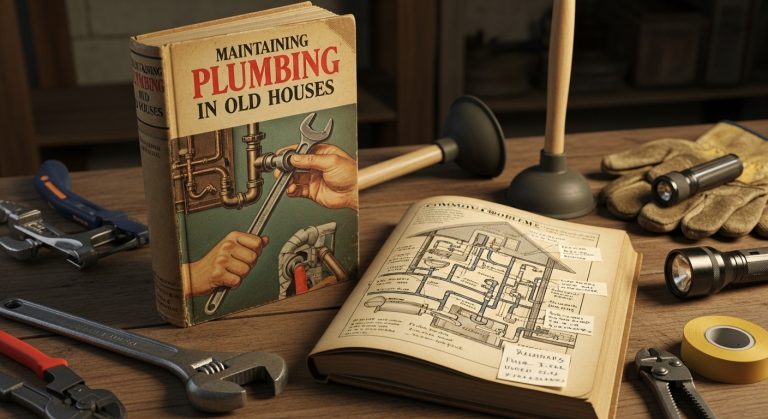Creating a Personalized Home Office That Boosts Focus and Creativity
The home office has evolved from a temporary corner to a permanent fixture in our lives. No longer just a desk and a chair, a well-designed home office is a space for deep thinking, clear focus, and creative expression. Whether you’re working remotely, building your own business, or writing your next novel, the right workspace can help unlock your best work.
But productivity isn’t one-size-fits-all. Some people thrive in minimal, distraction-free zones; others draw energy from color, texture, and visual inspiration. The beauty of designing your own office is that you can tailor it precisely to how you work — blending function, comfort, and personality in a way that makes showing up to your desk feel like an invitation, not a task.
Let’s explore how to design a home office that reflects who you are while helping you do your best thinking — through thoughtful layout, lighting, furniture, color, texture, and curated decor.
Layout: Designing for Focus, Flow, and Function
Before you buy a single item, consider your office layout. The way your furniture is arranged influences how you move, think, and feel throughout the day.
Start by asking: What kind of work do you do, and how much space do you need to do it? Writers may prioritize a quiet desk zone with minimal visual noise. Designers or content creators might want an additional space to brainstorm or create mood boards. If your work is call-heavy, sound isolation and camera-friendly lighting become priorities.
Place your desk near natural light, if possible — research shows that exposure to daylight boosts mood and focus. Ideally, face the window perpendicularly so you get ambient light without glare on your screen. Avoid facing a wall if it makes you feel boxed in, unless you plan to decorate it with art, shelves, or a vision board.
Keep your essentials close: computer, notebook, planner, pens, water, or anything you reach for repeatedly. Use vertical space efficiently — floating shelves, wall-mounted storage, or pegboards can help keep surfaces clear and workflow smooth.
If you have the room, create zones. One for working, one for reading or ideation, and maybe even one for stretching or journaling. Movement within the office space can help refresh mental energy throughout the day.
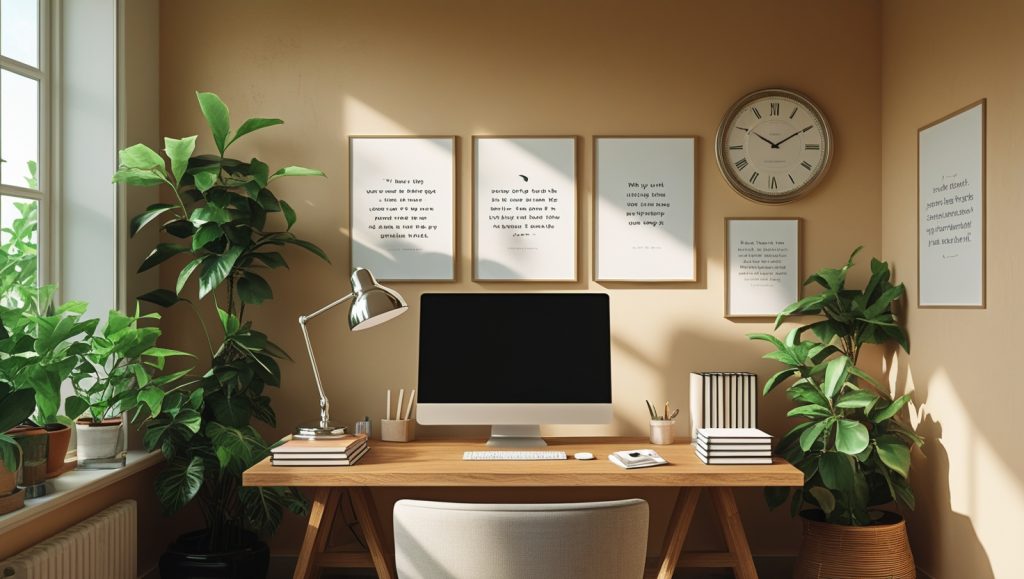
Lighting: A Layered Approach to Energy and Ambiance
Good lighting is one of the most important — and most overlooked — factors in a productive home office. It doesn’t just affect visibility; it impacts focus, alertness, mood, and even creativity.
Begin with natural light. Orient your desk near a window to make the most of daylight hours. Natural light helps regulate circadian rhythms, keeping you energized and alert during the day. If you’re working in a room without windows, invest in daylight-mimicking bulbs and avoid harsh fluorescents.
Layer in task lighting — a desk lamp with adjustable arms and color temperature control is ideal. Warm lighting is great for late-night journaling or relaxed creative work; cooler lighting can increase alertness during long meetings or detailed projects.
Add ambient lighting for mood and balance. Floor lamps or wall sconces create softness and help prevent eye strain, especially when paired with screens. You can also use smart lighting systems that adjust throughout the day or respond to your work style.
Avoid overhead-only lighting. It flattens the space and lacks flexibility. A mix of lighting options allows you to dial in the energy depending on your task — brainstorm sessions might call for brightness, while email catch-up may benefit from a calmer, warmer light.
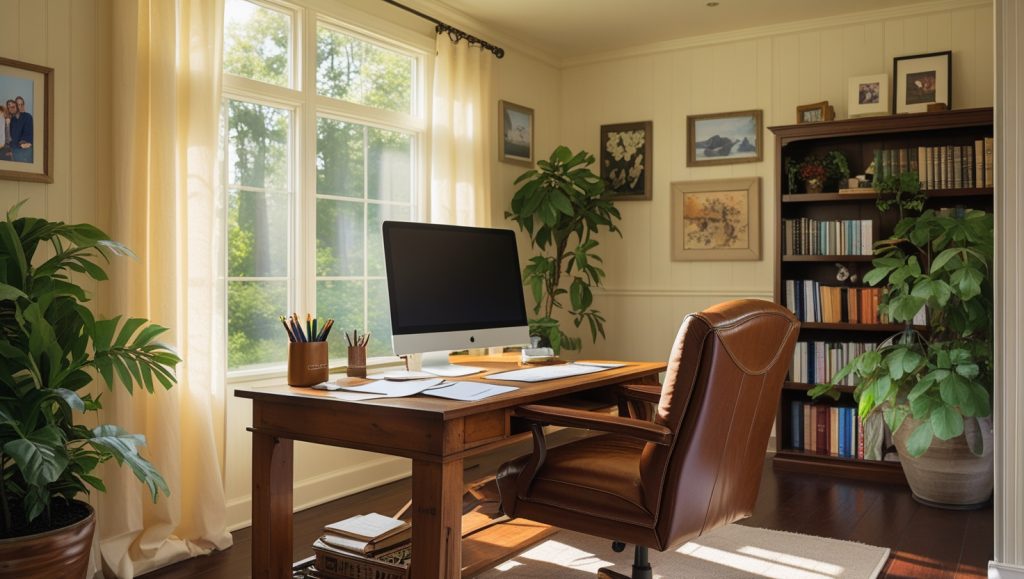
Furniture: Ergonomics Meets Aesthetic
Your office furniture is more than decorative — it’s the infrastructure of your day. And since you’ll be spending hours in this space, every choice should support both physical comfort and visual alignment with your personal style.
Start with your chair. An ergonomic task chair with lumbar support and adjustable height is non-negotiable for long-term comfort and spinal health. Don’t sacrifice support for looks — many brands now offer chairs that are both sculptural and supportive.
Your desk should be scaled to your needs. If you work with multiple monitors or spread out papers, go wider. If you’re mostly digital, a sleek writing desk may be enough. Bonus: adjustable sit-stand desks are great for promoting movement and reducing fatigue.
Keep storage integrated and streamlined. Think file cabinets on wheels, wall-mounted organizers, or under-desk drawers. Open shelving can be beautiful when styled well, but keep visual clutter in check with matching boxes or baskets.
Other thoughtful additions include a footrest, standing mat, or secondary seating like a pouf or lounge chair for shifting posture during the day.
Color and Texture: Engaging the Senses Without Overstimulating
The colors and textures in your office shape your mental state — often more than you realize. Aim for a palette that energizes without overwhelming, soothes without sedating.
Soft neutrals like ivory, greige, taupe, and warm white create a grounded foundation. Layer in cooler tones like dusty blues or sage green for clarity and calm. If you need creative stimulation, add a touch of mustard yellow, terracotta, or muted coral through accents like pillows, rugs, or art.
Avoid overly bright or saturated tones, especially on large surfaces. Red, for instance, can be energizing in short bursts but anxiety-inducing in large doses.
Texture brings depth and tactility to the space. Mix smooth finishes like glass or lacquer with natural ones — think wool rugs, linen curtains, raw wood shelves, or rattan baskets. These layered materials create sensory comfort that helps regulate mood and focus.
Use textiles for acoustic benefits too. A heavy curtain or upholstered wall panel can dampen sound and soften the energy of the room, especially if you’re recording or taking calls.
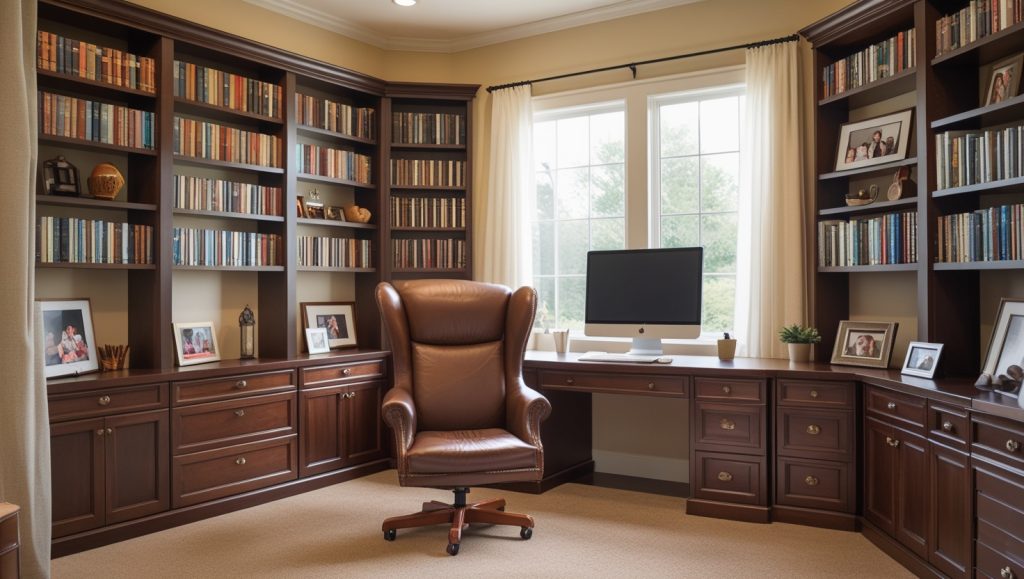
Decor and Personalization: Minimal, Meaningful, Motivating
Decorating your home office isn’t just about style — it’s about creating a space that reminds you why you show up every day. But decor should serve your mindset, not distract from it. That’s where intentional minimalism shines.
Keep the desktop as clear as possible, with only daily-use items and one or two pieces that inspire you — a candle, a framed quote, or a favorite pen holder.
Create a focus wall with art, mood boards, or a chalkboard. Rotate visuals seasonally to spark fresh energy. This is your place to dream out loud — let your wall reflect your current goals, values, or creative ideas.
Incorporate biophilic elements — plants are proven to boost cognitive function and lower stress. Even a small desk fern or trailing pothos can add vibrancy and life to your setup.
Keep personal touches quiet but powerful. A favorite mug. A stone from a memorable hike. A stack of books that changed your thinking. These details don’t just decorate the space — they anchor you in it.
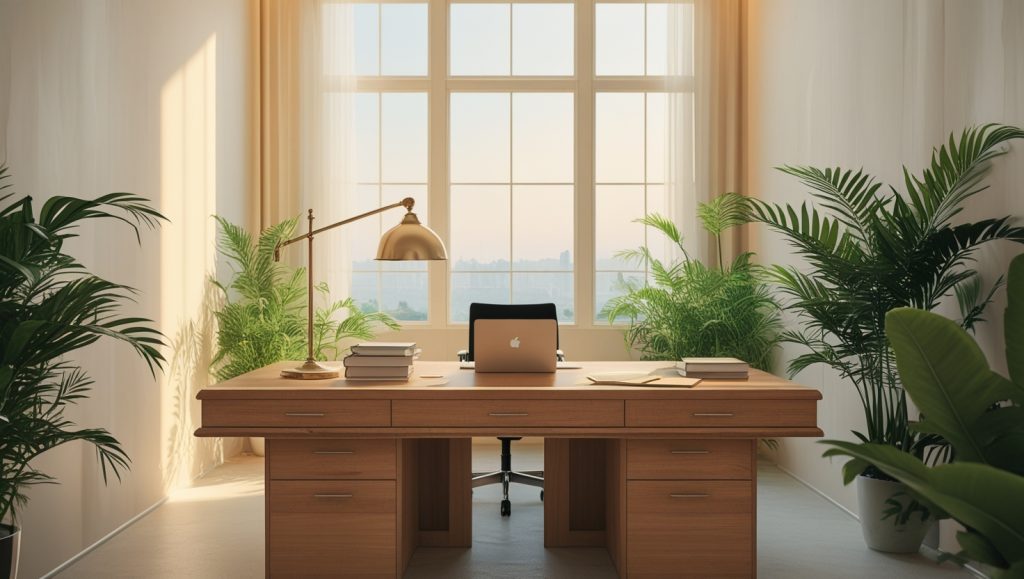
Sound, Scent, and Atmosphere: The Invisible Tools
A personalized home office isn’t only visual — it’s atmospheric. Sound and scent play a powerful role in productivity and emotional regulation.
If you’re sensitive to noise, add acoustic treatments like thick rugs, fabric wall art, or ceiling panels. Use noise-canceling headphones or a small white noise machine to drown out external distractions.
Curate a playlist for different types of work — ambient music for deep focus, nature sounds for writing, or lo-fi beats for email bursts. Silence is golden for some; soothing background sound is fuel for others.
Scent can be surprisingly impactful. Try a diffuser with essential oils like rosemary (clarity), lavender (calm), or citrus (energy). Even a scented candle or a bit of fresh eucalyptus can transform the room’s vibe.
Keep airflow fresh. Crack a window, use a fan, or add a humidifier in dry months. A fresh-feeling room invites you to stay longer and think clearer.
Final Thoughts: Building a Space That Works Like You Do
The best home offices aren’t just efficient — they’re personal sanctuaries for doing meaningful work. They reflect your rhythm, support your body, stimulate your creativity, and make even mundane tasks feel a little more inspired.
So don’t design for Pinterest. Design for you. What makes you feel alert? What colors calm you down? Where do your best ideas land — in silence or with music? The more honest your answers, the more effective and joyful your workspace will become.
Because when your office is aligned with who you are and how you work, the rest flows from there






